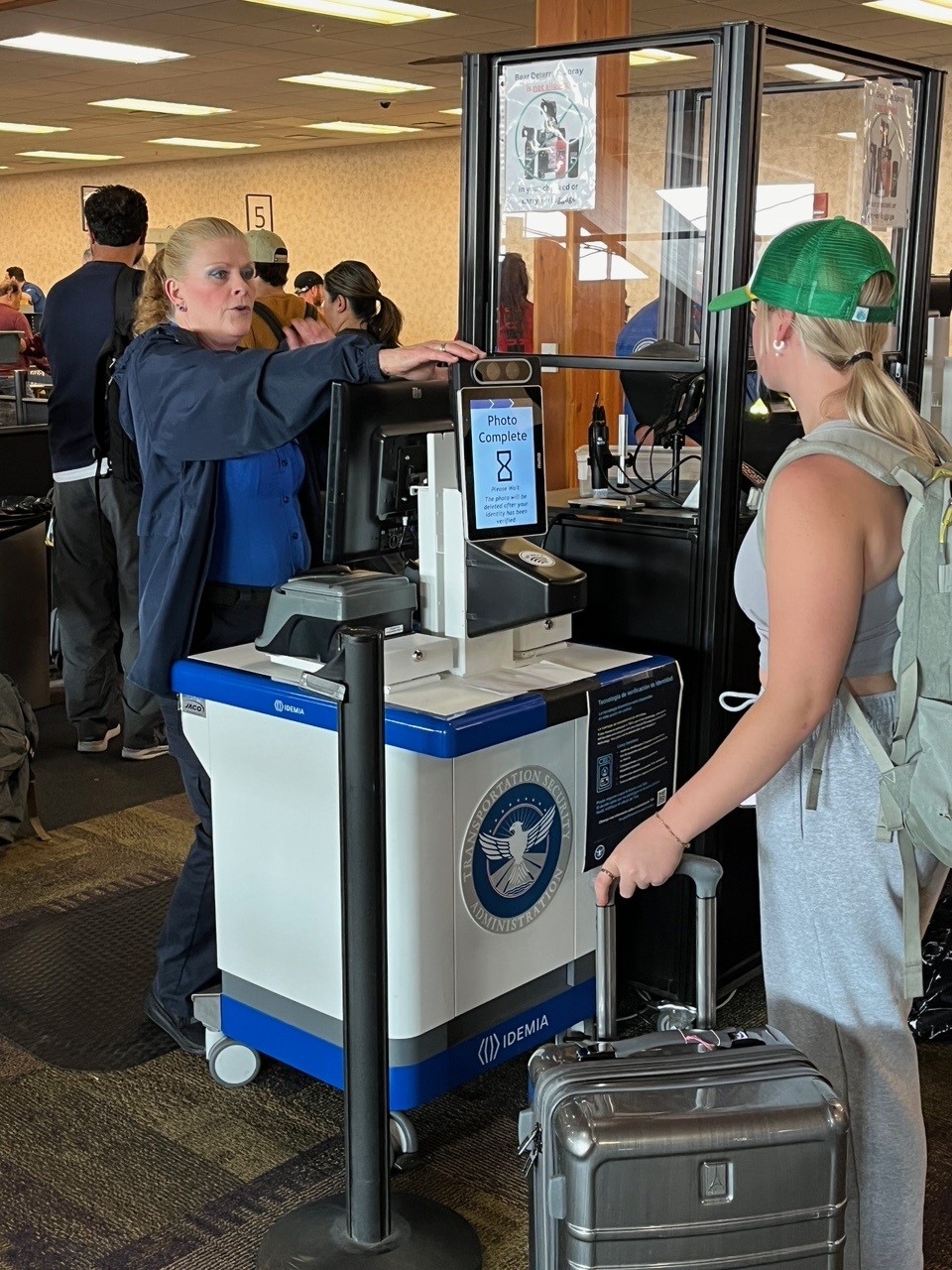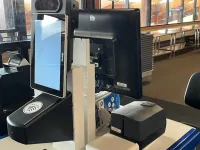 A traveler departing BZN has a photo taken by the CAT-2 unit during the identification verification process.
A traveler departing BZN has a photo taken by the CAT-2 unit during the identification verification process.
BELGRADE, Montana - The next time you depart one of five Montana airports, you will have the option of having your identity verified by the latest generation of Credential Authentication Technology (CAT). The Transportation Security Administration (TSA) in Montana has deployed units that use facial matching technology to verify the identity of travelers during the security screening process.
TSA has been using first-generation CAT units in Montana for a few years. They are designed to scan a traveler’s photo identification, confirm the individual is ticketed for travel and note the type of screening (such as TSA PreCheck®) that the traveler is eligible for. The TSA officer visually verified the identity of the traveler using their photo identification.
The new CAT units, referred to as CAT-2, have the same capabilities as the first-generation CAT units, but they are equipped with a camera that captures a real-time photo of the traveler.
CAT-2 units compare the traveler’s photo on the ID against the in-person, real-time photo using facial matching technology. Once the CAT-2 unit confirms a match, the TSA officer will verify and the traveler can proceed to security screening, all without exchanging a boarding pass. TSA officers can perform additional passenger verification if needed.
“TSA continues to invest in technologies that streamline the process for travelers while enhancing security. We are pleased with the capabilities and performance of the CAT-2 units in the identity verification process,” said TSA Federal Security Director in Montana Kc Wurtsbaugh. “Travelers departing any of the five airports in Montana where this technology is in use will see signage posted reminding them that participation in the facial matching process is optional.”
TSA is using CAT-2 units at Bozeman-Yellowstone International Airport; Billings International Airport, Great Falls International Airport; Helena Regional Airport and Missoula International Airport. TSA introduced this technology in Montana starting in September.
Photos captured by any CAT unit are never stored or used for any other purpose than immediate identity verification. Travelers who don’t want to participate in the facial matching process can opt out in favor of an alternative identity verification process.
CAT plays an important role in passenger identity verification. It improves a TSA officer’s ability to authenticate a traveler’s photo identification while also identifying inconsistencies associated with fraudulent travel documents.
TSA continues to integrate new technologies into its identity verification process. Read more about these programs at www.tsa.gov/digital-id.

